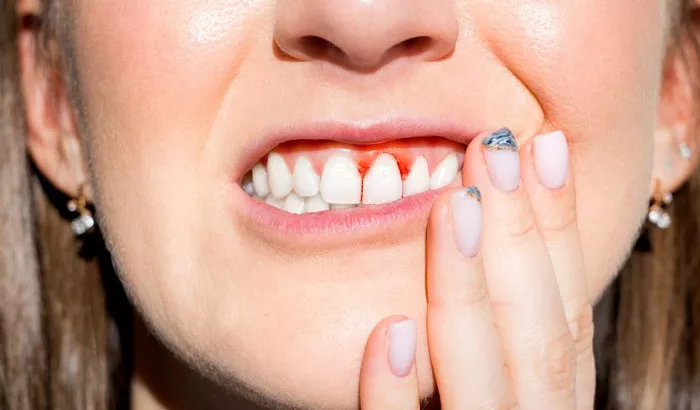Periodontitis, a severe form of gum disease, can lead to tooth loss and other health complications if left untreated. However, when caught early, it is possible to manage and even reverse the condition. Early periodontitis, also known as gingivitis progressing to periodontitis, requires prompt and effective treatment to prevent further damage. In this article, we’ll explore the causes, symptoms, and treatment options for early periodontitis, as well as practical tips for maintaining gum health.
What Is Early Periodontitis?
Early periodontitis is the initial stage of periodontal disease, where inflammation and infection begin to affect the supporting structures of the teeth, including the gums, periodontal ligament, and alveolar bone. It typically develops from untreated gingivitis, which is characterized by red, swollen, and bleeding gums.
Key Features of Early Periodontitis
Gum Inflammation: Persistent redness and swelling of the gums.
Bleeding: Gums bleed easily during brushing or flossing.
Pocket Formation: Small pockets (3–4 mm) form between the gums and teeth due to tissue detachment.
Bone Loss: Early signs of bone loss may be visible on X-rays.
Causes and Risk Factors of Early Periodontitis
Understanding the causes and risk factors of early periodontitis is essential for effective treatment and prevention:
Poor Oral Hygiene
Inadequate brushing and flossing allow plaque to build up on the teeth and gums, leading to inflammation and infection.
Smoking and Tobacco Use
Tobacco use weakens the immune system and reduces the gums’ ability to heal, increasing the risk of gum disease.
Genetic Predisposition
Some individuals are more susceptible to gum disease due to genetic factors.
Hormonal Changes
Hormonal fluctuations during pregnancy, menstruation, or menopause can make gums more sensitive to inflammation.
Systemic Diseases
Conditions like diabetes, heart disease, and autoimmune disorders can increase the risk of periodontitis.
Medications
Certain medications, such as anticonvulsants and calcium channel blockers, can cause gum overgrowth and increase the risk of infection.
How to Treat Early Periodontitis: Effective Strategies
Treating early periodontitis involves a combination of professional dental care and at-home oral hygiene practices. Here’s a step-by-step guide:
Professional Dental Cleaning
The first step in treating early periodontitis is a thorough dental cleaning to remove plaque and tartar buildup.
Scaling: Removal of plaque and tartar from above and below the gumline.
Root Planing: Smoothing the tooth roots to help the gums reattach to the teeth.
Antibacterial Treatments
Your dentist may recommend antibacterial treatments to reduce infection and inflammation.
Antibacterial Mouthwash: Prescription mouthwashes containing chlorhexidine can help control bacteria.
Antibiotic Gel or Chips: These are placed in the gum pockets to release medication over time.
Improved Oral Hygiene
Maintaining excellent oral hygiene is critical for managing early periodontitis.
Brushing: Brush twice a day with a soft-bristled toothbrush and fluoride toothpaste.
Flossing: Floss daily to remove plaque between teeth and along the gumline.
Interdental Brushes: Use these to clean between teeth and around dental work.
Lifestyle Changes
Making positive lifestyle changes can support gum health and prevent further damage.
Quit Smoking: Smoking worsens gum disease and hinders healing.
Healthy Diet: Eat a balanced diet rich in vitamins and minerals to support immune function.
Stress Management: Chronic stress can weaken the immune system, making it harder to fight infections.
Regular Dental Check-Ups
Frequent dental visits allow your dentist to monitor your gum health and provide timely interventions.
Frequency: Visit your dentist every 3 to 4 months for cleanings and check-ups.
Monitoring: Your dentist will measure gum pockets and check for signs of progression.
The Role of Technology in Treating Early Periodontitis
Advancements in dental technology have improved the diagnosis and treatment of early periodontitis:
Digital X-Rays
Digital X-rays provide detailed images of the teeth and supporting structures, helping dentists detect bone loss and plan treatment.
Laser Therapy
Lasers offer a minimally invasive way to remove infected tissue and promote gum healing.
Ultrasonic Scalers
These devices use high-frequency vibrations to remove plaque and tartar more effectively than traditional tools.
Conclusionc
Early periodontitis is a manageable condition when detected and treated promptly. By combining professional dental care with improved oral hygiene and lifestyle changes, you can halt the progression of gum disease and protect your smile.If you notice any signs of gum inflammation or bleeding, don’t wait—schedule an appointment with your dentist. With the right care and attention, you can maintain healthy gums and prevent the serious consequences of advanced periodontitis. Remember, your oral health is a vital part of your overall well-being, so take action today!

